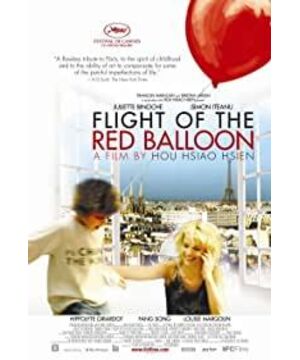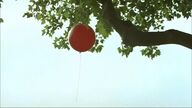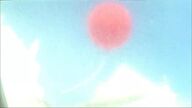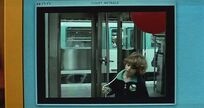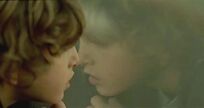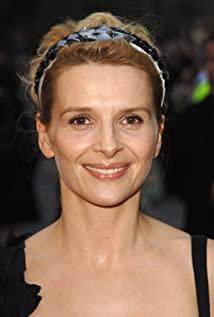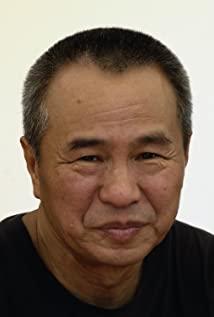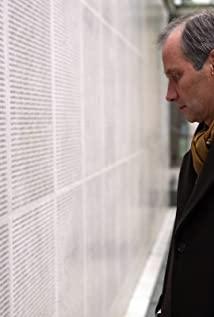Regarding Hou Hsiao-hsien's method of making films, I have seen his script for "City of Sadness" before. It's really just the setting of the scene, and some scene descriptions are very simple. Basically, his approach to filmmaking is to use the independence of the actors to create. This is not a simple action like I throw the task to the actors, saying that writing has a sense of hand, and language has a sense of language, so Hou Hsiao-hsien is the kind of person who often follows his own sense of guidance, although he does not know the specifics, But he knew the sentimental, emotional stuff he wanted. What he needs is an abstract, concrete form of expression, which is left to the actor to create twice, and he can't take 2 once until he achieves the abstract feeling he needs.
And compare this "Red Balloon" with the previous works. I think it's closest to Coffee Hour. Personally, I prefer "Coffee Time", maybe the Japanese elements are more appealing to me. It was also shot in a foreign country, the same foreign actors, and the same creative method. Filming in a foreign country will encounter big obstacles. For example, in "Coffee Time", the scene where Tadanobu Asano and the girl stared at each other on two light rails took a whole day to shoot, because the Japanese Shinkansen was not available. Traffic scheduling allowed, and then the two teams sat on the Shinkansen for a day, going back and forth just to wait for the moment when the two Shinkansen passed by and stopped. In France the same obstacle, the language and the terrain are unfamiliar. But the great thing about "Red Balloon" is that Juliette Binoche is cast. She is a very good actor. Although Hou Hsiao-hsien doesn't know what the lines she says in the specified situation, she can completely follow her. She could see what she was expressing in her body and demeanor. She has created a very full character, a very anxious character, a mother who loves her career and children. The script itself only restores some of the mother's life in various aspects of society, that is, to show the living state she has achieved after a relatively long life. These seemingly understated scene settings are very ordinary, but they contain history, memories, and a person's past.
Like the fairy tale in "Coffee Time", "Red Balloon" also has a miniature play-in-play, the puppet drama "Zhang Sheng Boils the Sea". These special methods make the film full of childlike interest. The camera is like a curious child, quietly watching fresh and lovely things, trying to find out. They pieced together life as it was, so real it wasn't real -- I mean, it wasn't like a regular movie.
Another actor, Song Fang, is also a very good choice. He is quiet, shy, cautious, and thoughtful, just like a normal child in mainland China. Although it may seem silly at times, inability to speak is a common element of Chinese character. One of my personal favorite scenes is when Juliet rushes back from outside at Christmas, Song and Juliet's friend are making omelettes and she brings everyone presents. Best of all, she picked up the plastic bag and shook it in front of her son for him to guess what it was, so much so that the plastic bag shook the chandelier—what a reckless and innocent mother. And she also brought gifts for Song, even though Song was just her son's nanny. When I was watching this scene, I even felt that the cold that Juliet was carrying when she entered the door was dispelled by the warmth of the house; and her nose and fingers were destined to be cold, and these were also thawed by the air at home. . It's very lifelike, and the actors' random lines are also quite good.
The red balloon has always been floating over Paris, from the beginning to the end of the film, from the streets of Paris to the roof of the Musée d'Orsa, all the way far, far away. As Hou Hsiao-hsien said, "Red Balloon" is a French classic, a classic of the 1950s. This balloon is like an old soul from 50 years ago, quietly floating in the sky of Paris, watching the joys and sorrows of people in time not far away. Some people see it, some people don't. In fact, in the last scene, the museum looked at the paintings, and the director asked a very classic question from the teacher in the film: What does the red balloon represent? And the children's answers may be instructive. Like a toy from a boy, like a ghost, or a happy mood. . .
When I think of the French version of "Forgotten Time", this is the biggest surprise for me from "Red Balloon". It is completely different from Cai Qin's classic interpretation. This cover is light and clear, combining modern jazz and dynamism. , with the music red balloons fly farther and farther like a flock of birds, like a time that has passed, and what has passed is gone. There is no heavy and no sadness, only a little sadness, we still have more and better times waiting for us to spend. . .
View more about Flight of the Red Balloon reviews


